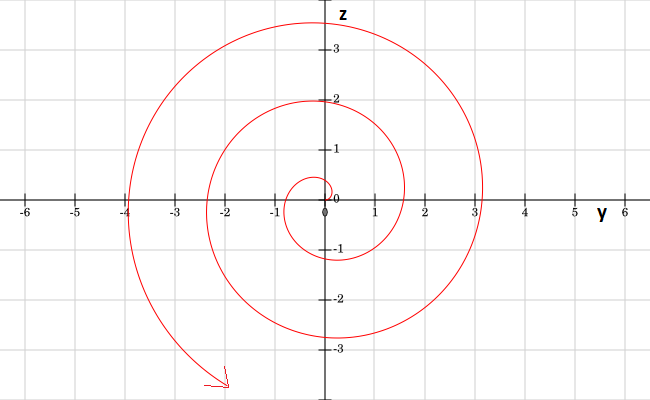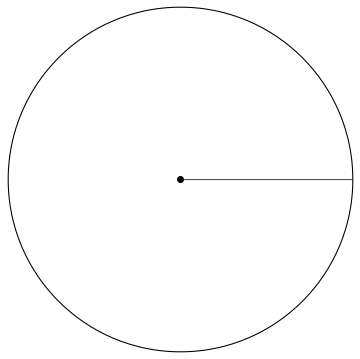answered
2014-06-30 12:54:39 -0600
The problem says the the wheel is rotating at $12 \frac{rad}{s}$, with the center at the origin. Since the problem says the wheel is "rotating", and not "rolling", we know that the wheel is just spinning. Since the wheel is rotating and the bug is on it, (assuming he is no longer at the dead center) we know that the bug is going around the origin in circular motion of radius $R$. The bug is crawling along one of the spokes at a constant speed of $3 \frac{units}{s}$, so we also know that the radius of the circle that the bug is traveling on is changing at $3 \frac{units}{s}$. Therefore we know that as the bug traces out the circle the radius gets bigger tracing out a spiral.
I know that you only asked for the conceptual, but for any one else who will have a question on the math, ill explain that too.
To represent this mathematically we will break it into linear motion and circular motion. I will represent the linear motion of the bug by the distance away from origin, and the circular motion by the position of the spoke he is crawling on. We know that the bug is crawling away from the center of the origin at a constant rate of of $3 \frac{units}{s}$, since the center of rotation is at the origin, and the bug is always crawling away from the origin the radius is simply represented by $3\frac{units}{s}$ multiplied by time $t$ or. $$R = 3\frac{units}{s} * t$$ $$ R= 3t$$
The circular motion of the bug is represented by a simple circle, we know that a unit circle on the xy plane can be represented by $$\overrightarrow P(t)=\langle cos(t),sin(t),0\rangle$$ but since our wheel is rotating in the yz plane (the problem said xz plane, but this was a typo) we must make the circle in the yz plane by changing our equation to $$\overrightarrow P(t)=\langle 0,cos(t),sin(y)\rangle$$ We know that the bug initially crawls up the +y axis so the initial direction (at $t=0$) must be in the +y direction. If we set the $y$ component equal to $sin(t)$ and $z$ componet equal to $cos(t)$ we get $$\overrightarrow P(t)=\langle 0,sin(t),cos(t)\rangle$$ at $t=0$, $ y=sin(0)=0$ and the $z=cos(0)=1$ therefore in order to make +y the starting direction we make $y=cos(t)$ and $z=sin(t)$ giving us the equation $$\overrightarrow P(t)=\langle 0,cos(t),sin(y)\rangle$$ The problem states that the wheel is rotating at $12 \frac{rad} {s}$, since the unit circle rotates at $1 \frac{rad} {s}$, we must multiply the $t$'s in the equation by 12 so the circle will rotate 12 times faster. This gives us $$\overrightarrow P(t)= \langle 0,cos(12t), sin(12t)\rangle$$
$Note$ I have noticed that people have been wanting to convert to $\frac{radians}{second}$, but remember that the only things you can plug into sine and cosine are $degrees$ and $radians$.
Now we must combine the linear and circular motion, to do this we multiply the unit circle equation by the radius to obtain the position equation. Since our circle is represented by a vector in a parametric equation and the radius is a multiplier, we can use scalar multiplication and distribute the radius over the vector $$\overrightarrow P(t)=\langle 0,Rcos(12t),Rsin(12t)\rangle $$
Finally we plug in the R value of $R=3t$ and we get our anwser
$$\overrightarrow P(t)=\langle 0,3tcos(12t),3tsin(12t)\rangle$$

or a modified 3d graph of jlubin's to support my theory.
Comment: Very nice! I think I like the $12t$ here better than the $6/\pi$ in the other answer.


